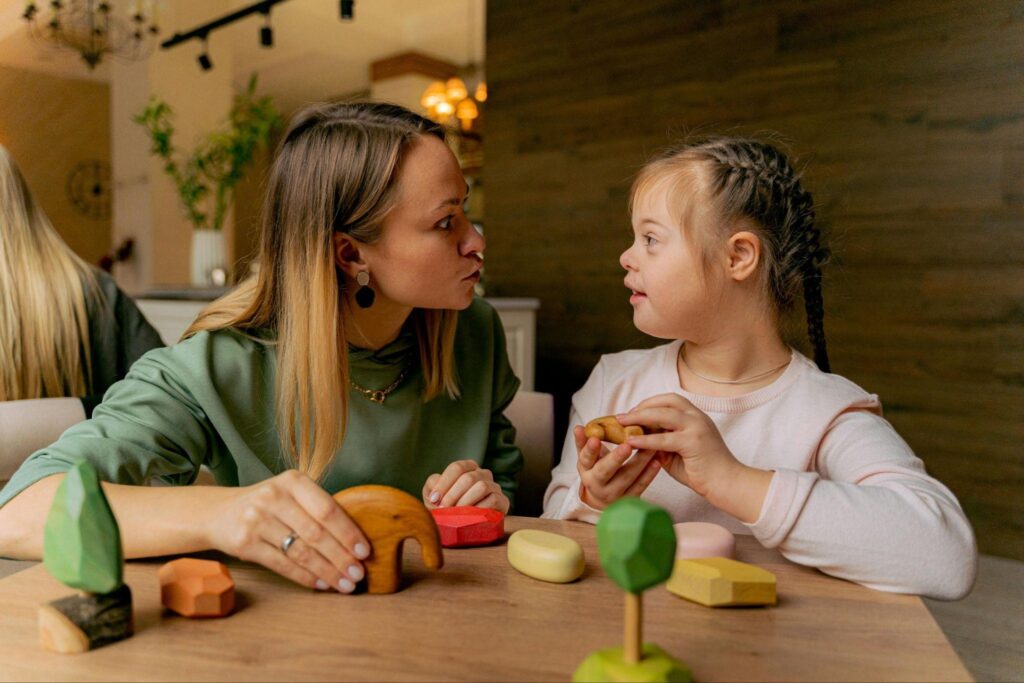By Laura Pearson
Every child learns differently. As a parent, you’re more than a helper — you’re the interpreter, the innovator, the anchor. You don’t need a perfect plan or special training to help your child grow. You need patience, flexibility, and faith in small moments. This guide is about finding learning in the messy, in-between spaces of daily life — and realizing you’re already more equipped than you think. The following suggestions are powerful for all children, including those with special needs.
Note: Many of the links go to pages with activities for those children who have special needs, but the activities are great for ALL kids’ brain development!
Start with Texture, Not Textbooks
Your child may not respond well to worksheets or flashcards, but give them a tub of rice and suddenly, they’re focused. That’s not distraction — that’s engagement. Sensory activities stimulate multiple brain areas at once, building pathways for learning through physical input. What looks like play is often deep neurological work, especially for kids with processing or regulatory challenges.
To do this well, don’t just hand them a bin and hope for the best. Instead, try to engage them in purposeful sensory play that’s tied to goals — matching textures to words, sorting by color, counting scoops. The play becomes a bridge, not a break. The key is structure without rigidity, and repetition without boredom.
Let Real Life Do the Teaching
Let’s drop the idea that learning only happens at a desk. It also happens in breakfast prep, watering the garden, and laundry folding. One of the most effective strategies is to build hands-on learning into everyday routines.
Let your child measure cooking ingredients, group socks by color, and count stairs as you go up. These aren’t hacks. They’re functional academics deeply rooted in context, muscle memory, and task connection. This is learning they’ll use in life as well as apply to what they learn in school.
Reduce the Pressure — For Both You and Your Child
Let’s be honest: structure is hard to maintain when you’re juggling work deadlines, household needs, and caregiving. For parents — especially moms — that tension is constant. It’s easy to slide into guilt or packed schedules and elaborate plans.
And one of the most sustainable ways to support your child’s learning is by reducing the pressure on yourself. That includes routines that flex when life demands it and schedules that make room for rest. It’s possible to honor your child’s needs while still balancing care and career needs. The trick isn’t perfection — it’s pacing, realism, and grace.
Shape the Play Without Stealing the Lead
Play is not just fun — it’s serious developmental business. Some unguided play is healthy and good for our brains. But if you have a child who needs extra structure, a light hand makes a big difference.
Set up scenarios that nudge them toward problem-solving: a pretend store for practicing math, a costume box for sequencing and story-building, a scavenger hunt for objects that start will letter sounds.
Parents often overlook how powerful it can be to embrace guided play for learning when the scaffolding is subtle but present. The child still feels free, but the environment is quietly shaped to provoke thought, emotion, and discovery that gets stored in their long term memory centers for future use.
Notice the Learning That Finds You
You don’t need a plan for every moment — some of the best learning happens unannounced. Your child asks a question during a walk. You talk through the answer. That’s a lesson. Or they get frustrated zipping their coat, and you coach them through it with patience. That’s executive functioning in action. There’s magic in these tiny, unplanned exchanges. Learning can be light-footed if you let it.
Try teaching through naturally occurring moments at home — not by turning every minute into a teachable moment, but by staying present enough to recognize one when it comes. Show up with your eyes open, not a script.
Let the Art Say What Words Can’t
Sometimes words fail — especially when emotions run hot or feel tangled. Art can step in where language lags. For children, especially those with special needs, creative outlets like painting, clay work, or textured collage are more than crafts. They’re expressions of processing, reflection, and connection. When given freedom and encouragement, children often surprise us with what they can convey through color, shape, and material.
One of the most grounding approaches is emotional expression through sensory-based art, where the focus is not on perfection but participation. Let them tear paper, smear glue, mix media — the product doesn’t matter. The process is the point.
You don’t need expert credentials to raise a child who learns and thrives. Just presence, flexibility, and a willingness to try again.
Real learning happens in the ordinary — in laughter, frustration, repetition, and rest. Forget the perfect program. Your rhythm, your care, your instincts — they’re enough. Start simple, stay responsive, and trust that what you’re doing matters. Because it does.
A little reminder: You can unlock the secrets to raising smart, confident kids with The Brain Stages and discover how to bring joy back into education and parenting!
Special thanks to Laura Pearson for contributing this article to our Brain Stages Surefire Tips blog. If you would like to contribute an article to our community, please send an email to trish@thebrainstages.com.
Enjoy the journey!
Best possible wishes,
Trish Wilkinson, founder Brain Stages Education and Parenting


